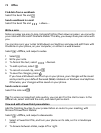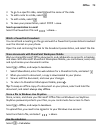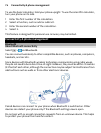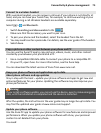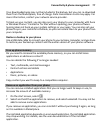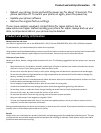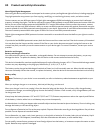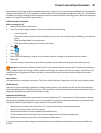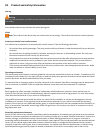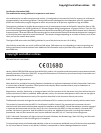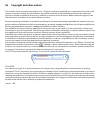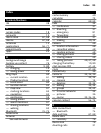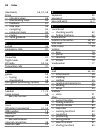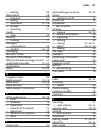
About Digital Rights Management
When using this device, obey all laws and respect local customs, privacy and legitimate rights of others, including copyrights.
Copyright protection may prevent you from copying, modifying, or transferring pictures, music, and other content.
Content owners may use different types of digital rights management (DRM) technologies to protect their intellectual
property, including copyrights. This device uses various types of DRM software to access DRM-protected content. With this
device you can access content protected with WMDRM 10. If certain DRM software fails to protect the content, content
owners may ask that such DRM software's ability to access new DRM-protected content be revoked. Revocation may also
prevent renewal of such DRM-protected content already in your device. Revocation of such DRM software does not affect
the use of content protected with other types of DRM or the use of non-DRM-protected content.
Digital rights management (DRM) protected content comes with an associated licence that defines your rights to use the
content.
If your device has WMDRM-protected content, both the licences and the content are lost if the device memory is formatted.
You may also lose the licences and the content if the files on your device become corrupted. Losing the licences or the
content may limit your ability to use the same content on your device again. For more information, contact your service
provider.
Batteries and chargers
Battery and charger information
Your device has an internal, non-removable, rechargeable battery. Do not attempt to remove the battery, as you may
damage the device. To replace the battery, take the device to the nearest authorised service facility.
This device is intended for use when supplied with power from the following chargers: AC-16. The exact Nokia charger model
number may vary depending on the plug type, identified by E, X, AR, U, A, C, K, or B.
The battery can be charged and discharged hundreds of times, but it will eventually wear out. When the talk and standby
times are noticeably shorter than normal, to replace the battery, take the device to the nearest authorised service facility.
Battery safety
Note: The battery in your device is non-removable, so refer to the battery-related statements as applicable to your
device.
When you unplug a charger or an accessory, hold and pull the plug, not the cord.
When your charger is not in use, unplug it from the electrical plug and the device. Do not leave a fully charged battery
connected to a charger, as overcharging may shorten the battery’s lifetime. If left unused, a fully charged battery will lose
its charge over time.
Always keep the battery between 15°C and 25°C (59°F and 77°F). Extreme temperatures reduce the capacity and lifetime
of the battery. A device with a hot or cold battery may not work temporarily.
Accidental short-circuiting can happen when a metallic object touches the metal strips on the battery. Short-circuiting may
damage the battery or the connecting object.
Do not dispose of batteries in a fire as they may explode. Dispose of batteries according to local regulations. Recycle when
possible. Do not dispose as household waste.
Do not dismantle, cut, open, crush, bend, puncture, or shred cells or batteries. If a battery leaks, do not let battery liquid
touch skin or eyes. If this happens, immediately flush the affected areas with water, or seek medical help.
Do not modify, remanufacture, attempt to insert foreign objects into the battery, or immerse or expose it to water or other
liquids. Batteries may explode if damaged.
80 Product and safety information



